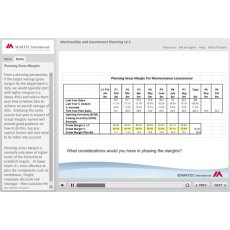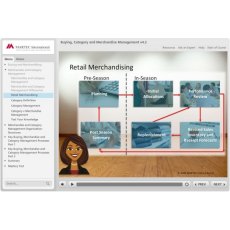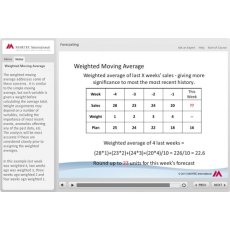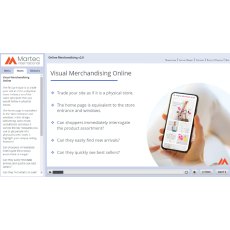Allocation and Replenishment E-Learning Course
Item: EL37
The course provides a thorough grounding in allocation and replenishment principles and concepts. It is suitable for retailers operating in both category management and merchandise management environments. Scroll down for course objectives and detailed content.

![]() In stock
In stock
Description
Allocation and Replenishment Training Course
The course provides a thorough grounding in allocation and replenishment principles and concepts. It is suitable for retailers operating in both category management and merchandise management environments.
Who Is It Suitable For?
This program is designed for :-
- Everyone involved in allocation and replenishment including merchandisers, supply chain managers and their teams.
- IT departments
- Vendors supplying and selling allocation and replenishment systems.
Course Objectives
By the end of this program students will be able to do the following:
- Explain the theory, principles and practice of allocation and replenishment
- Describe best practice allocation and replenishment processes
- Be able to determine which allocation and replenishment methods are most effective in which situations.
Detailed Content
- Allocation
- Definitions
- Allocation vs. assignment
- Key components – initial allocation
- Allocations reflecting inventory
- Initial allocation of new items with no sales history
- Allocations with trend history
- Based on last year’s sales
- Using unit sales
- Weeks of supply methods
- Allocation strategies
- Pre vs. post allocation
- Style vs. collection
- Proportional allocation
- Seasonal vs. basico
- Replenishment :
- Replenishment methods and calculation
- Effective replenishment objectives
- Fashion replenishment long season
- Fashion replenishment short season (fast fashion)
- Inventory review and ordering
- Push vs pull replenishment
- Ordering strategy
- Replenishment base model
- Store replenishment methods
- Min/max methods
- Sell one get one
- Fixed model stock
- Dynamic model stock method
- Replenish to plan or to forecast?
- Inventory rationing
- Fair shares / left wing school of merchandising
- Reinforcing winners / right wing school of merchandising
- Equal covers method
- Using substitute products
- Warehouse or DC replenishment
- How much inventory do you need?
- Key components – retailer’s lead time
- Key components – vendor’s lead time
- Key components service level
- Dealing with clearance merchandise and de-listed lines
- How do you know you are overstocked?
- Reducing overstocks
- Mastery test
Each module has its own mastery test and learners that achieve a 70% pass mark and complete the end of class survey will receive a certificate on completion.
Benefits of Studying This Program
Learners studying this program will be able to implement improved allocation and replenishment strategies, improved day to day processes and maintain better in stock service levels, reduce clearance markdowns and better achieve terminal stock targets.
Hours of Study
4 hours
Resources Included
The class includes the following downloadable resources for printing and review:
- Buying blog articles on inventory management
- Fast Fashion white paper
Pre-Requisites Necessary
A basic understanding of key retail processes, such as taught in the Buying & Merchandising Overview class.
The Demand Forecasting Class is a companion program which will also be helpful.
After This Program
The next logical program in developing learners’ knowledge is Merchandise & Assortment Planning.
Video
Please allow Cookies to view video content













Share & Forward To A Friend
Share
Allocation & Replenishment Course | Martec
Facebook Twitter Email Pinterest Telegram